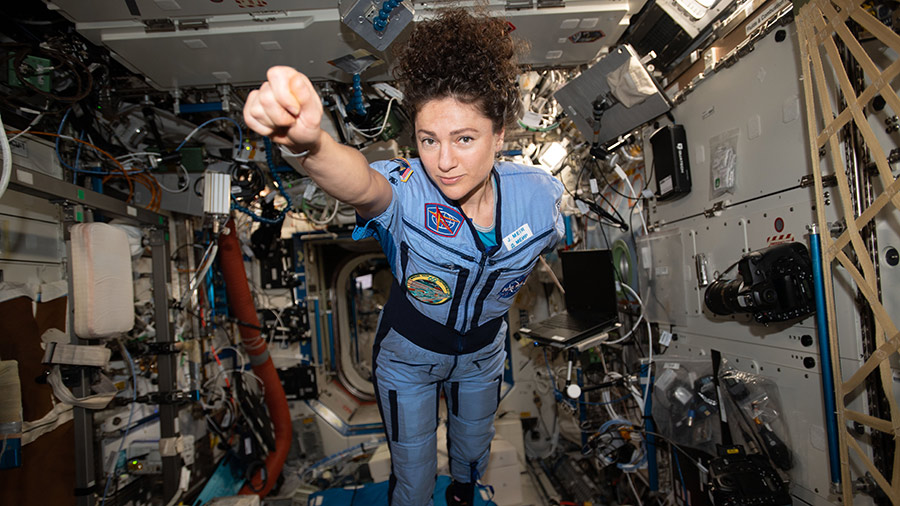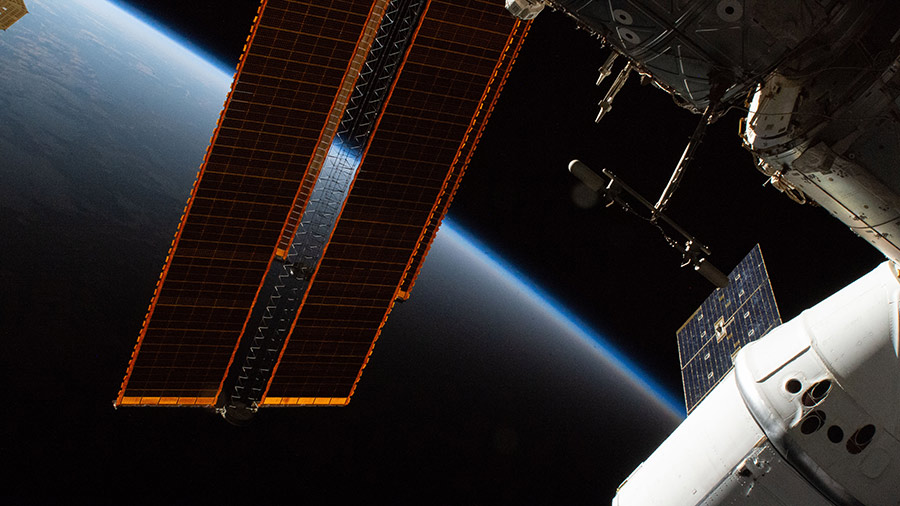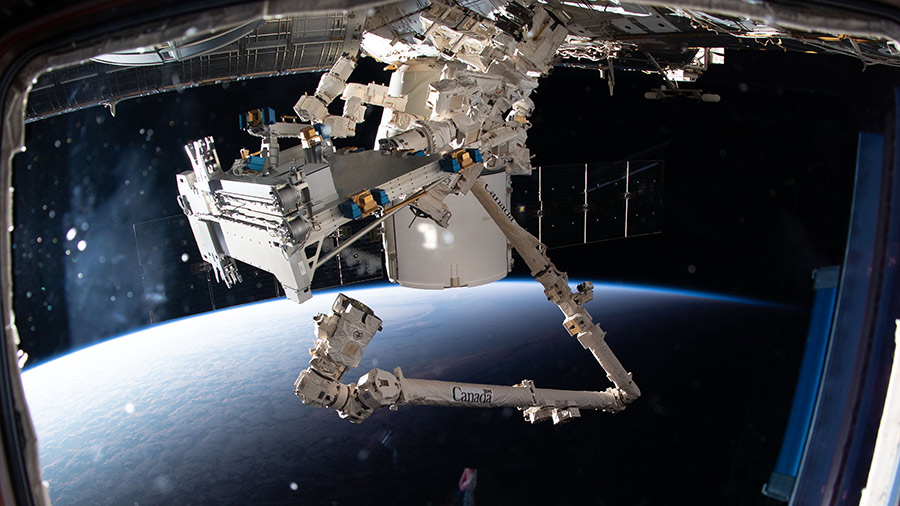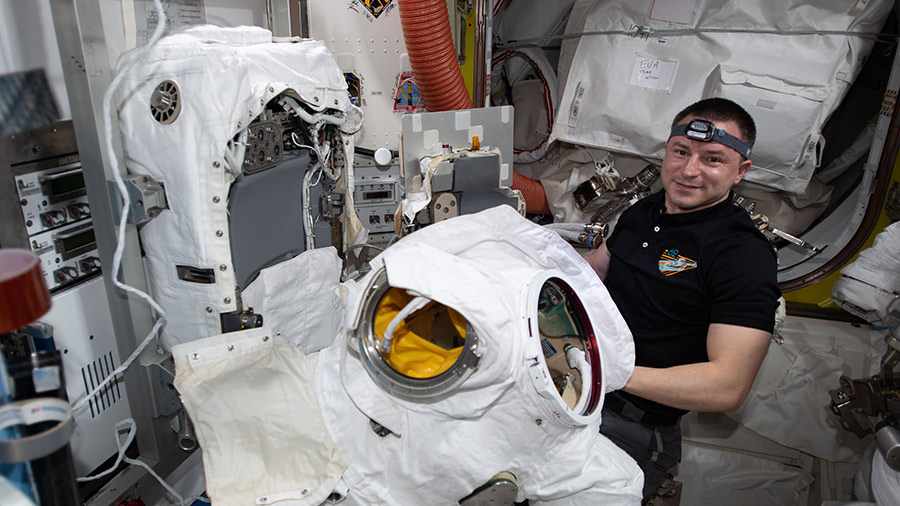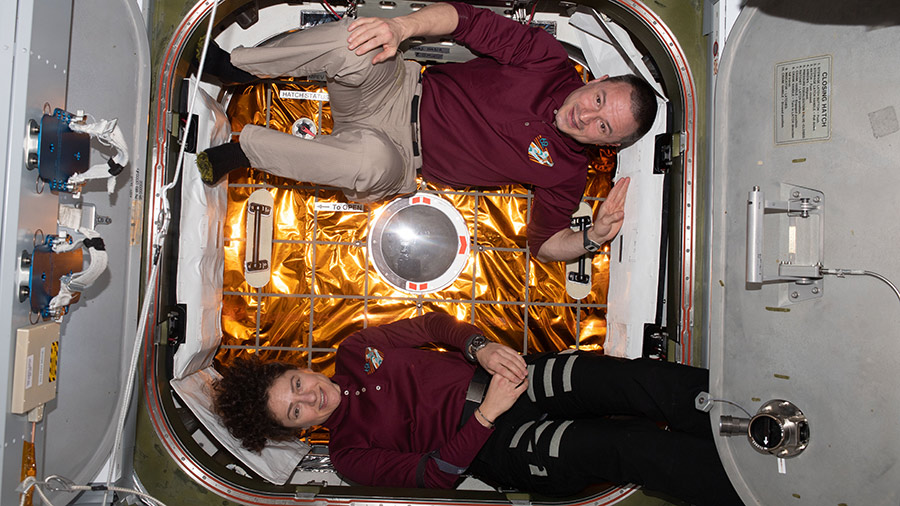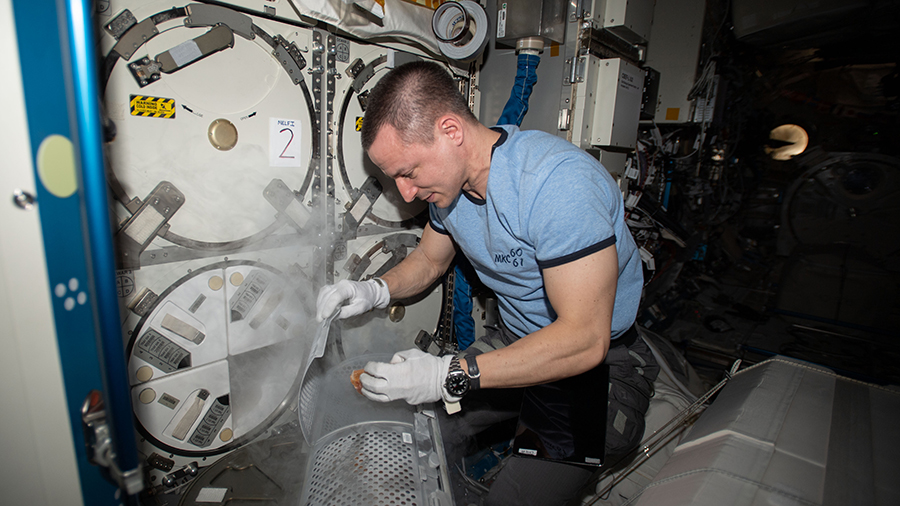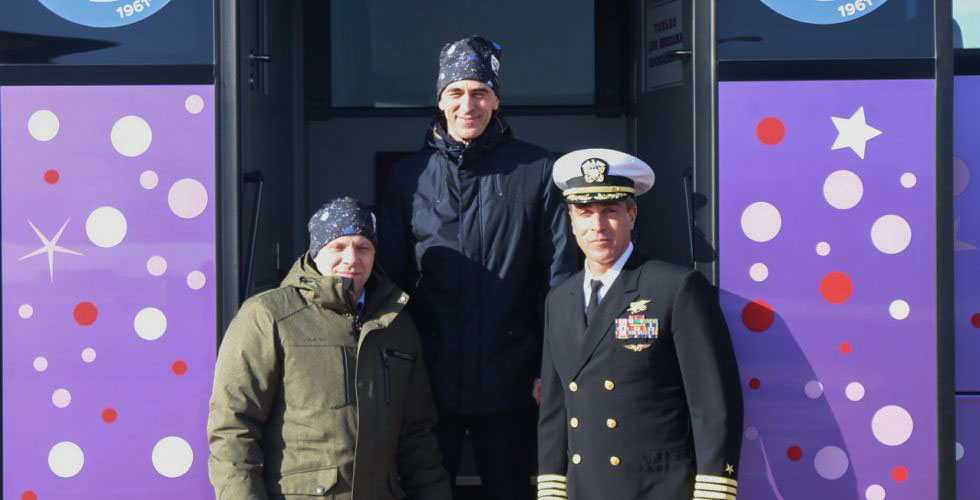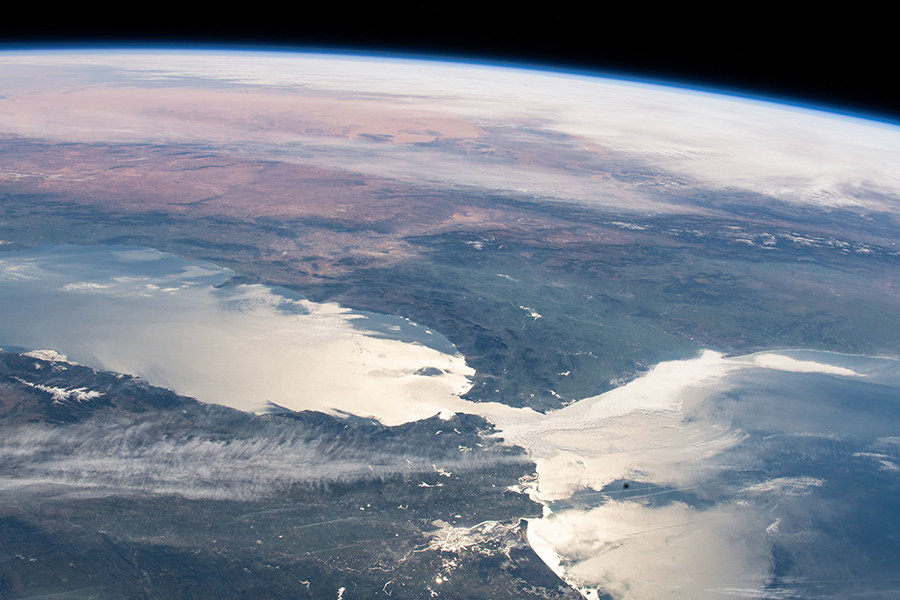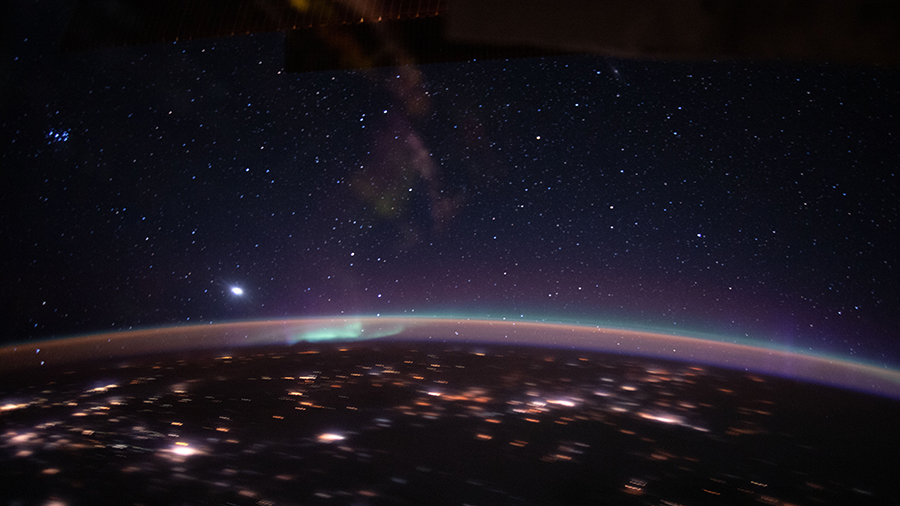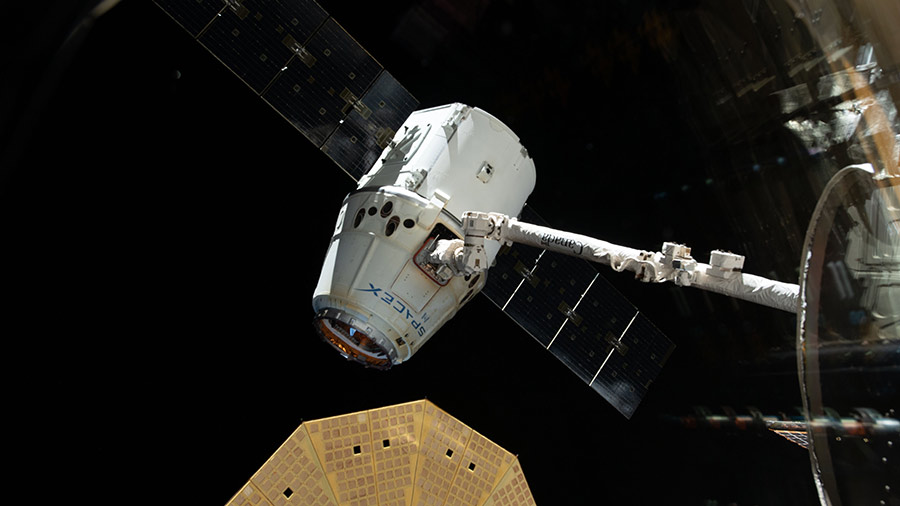
A Russian rocket rolled out to its launch pad today as a new crew gets ready for liftoff to the International Space Station. Meanwhile, the Expedition 62 crew will send off a U.S. cargo craft on Tuesday packed with science and hardware.
Russia’s Soyuz MS-16 crew ship stands at its launch pad in Kazakhstan today after rolling out from its processing facility at daybreak. The rocket will launch on Thursday at 4:05 a.m. carrying NASA astronaut Chris Cassidy and Roscosmos cosmonauts Anatoly Ivanishin and Ivan Vagner. The new Expedition 63 trio will dock to the Poisk module at 10:15 a.m. to begin a 195-day mission. NASA TV will broadcast the launch and docking activities live starting at 3 a.m.
NASA astronauts Andrew Morgan and Jessica Meir are loading the final critical research samples aboard the SpaceX Dragon resupply ship today. Dragon will splashdown in the Pacific Ocean carrying live mice, plant cells and other biological samples for analysis on Earth. Dragon is also packed with station hardware including spacesuit components for servicing and inspection.
Morgan will be monitoring departure activities when ground controllers command the Canadarm2 robotic arm to release Dragon on Tuesday at 9:15 a.m. EDT. This will end a 29-day stay at the Harmony module. Live NASA TV coverage begins at 8:45 a.m.
Station Commander Oleg Skripochka is getting ready for his departure when he Morgan and Meir return to Earth on April 17. The veteran cosmonaut will be packing the Soyuz MS-15 crew ship with personal items and station cargo over the next week-and-a-half.

